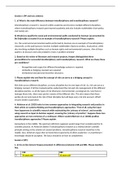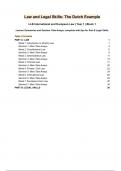Tentamen (uitwerkingen)
Antwoorden op de mogelijke tentamenvragen Interdisciplinary Themes In Food And Sustainability (YSS33806)
- Instelling
- Wageningen University (WUR)
Dit document bevat antwoorden op de 'pool of possible exam questions' van het vak Interdisciplinary Themes In Food And Sustainability (YSS33806). Met deze antwoorden is een 8 behaald voor het tentamen, maar dit betekent niet dat alle antwoorden ook helemaal kloppen.
[Meer zien]





